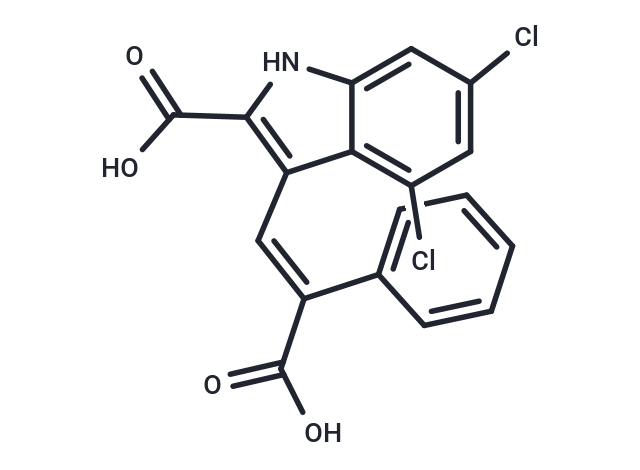Shopping Cart
Remove All Your shopping cart is currently empty
Your shopping cart is currently empty
MDL 105519 is a selective, non-competitive antagonist at the glycine site of NMDA receptors. It inhibits cyclic GMP accumulation in brain slices, modulates Ca²⁺ and Na⁺-Ca²⁺ currents, and exhibits anxiolytic activity in rat models.

| Pack Size | Price | USA Warehouse | Global Warehouse | Quantity |
|---|---|---|---|---|
| 2 mg | $99 | - | In Stock | |
| 1 mL x 10 mM (in DMSO) | $249 | - | In Stock |
| Description | MDL 105519 is a selective, non-competitive antagonist at the glycine site of NMDA receptors. It inhibits cyclic GMP accumulation in brain slices, modulates Ca²⁺ and Na⁺-Ca²⁺ currents, and exhibits anxiolytic activity in rat models. |
| In vitro | MDL 105519 is a potent and highly selective ligand for the glycine recognition site, completely blocking the binding of [³H]glycine to rat brain membranes with a Ki of 10.9 nM. Compared to other receptor types studied, MDL 105519 exhibits approximately 10,000-fold selectivity for the glycine recognition site. MDL 105519 inhibits various NMDA-dependent responses, including: increased [³H]TCP binding in brain membranes, accumulation of cyclic guanosine monophosphate (cGMP) in brain slices, and alterations in cytoplasmic Ca²⁺ and Na⁺‑Ca²⁺ currents in cultured neurons. The inhibition of NMDA by MDL 105519 is non-competitive and can be antagonized by D-serine [1]. |
| In vivo | MDL 105519 exhibits NMDA receptor antagonist properties in vivo. Following intravenous administration, MDL 105519 inhibits the harmaline-stimulated increase in cerebellar cyclic GMP levels, providing direct biochemical evidence for its NMDA receptor antagonistic effects in vivo. This antagonistic activity correlates with anticonvulsant efficacy across multiple seizure models, including genetic, chemically induced, and electrically evoked convulsion paradigms. Anxiolytic activity was observed in the isolation-induced vocalization model in rats, though muscle relaxant effects emerged at lower doses. Higher doses impaired motor coordination in the rotarod test but showed no influence on mesolimbic dopamine turnover or prepulse inhibition of the startle reflex [1]. |
| Synonyms | MDL105519 |
| Molecular Weight | 376.19 |
| Formula | C18H11Cl2NO4 |
| Cas No. | 161230-88-2 |
| Smiles | C(=C(/C(O)=O)\C1=CC=CC=C1)\C=2C=3C(NC2C(O)=O)=CC(Cl)=CC3Cl |
| Relative Density. | 1.594 g/cm3 (Predicted) |
| Color | White |
| Appearance | Solid |
| Storage | keep away from moisture,store at low temperature | Powder: -20°C for 3 years | In solvent: -80°C for 1 year | Shipping with blue ice/Shipping at ambient temperature. | |||||||||||||||||||||||||
| Solubility Information | DMSO: 13 mg/mL (34.56 mM), Sonication is recommended. | |||||||||||||||||||||||||
Solution Preparation Table | ||||||||||||||||||||||||||
DMSO
| ||||||||||||||||||||||||||
| Size | Quantity | Unit Price | Amount | Operation |
|---|

Copyright © 2015-2025 TargetMol Chemicals Inc. All Rights Reserved.